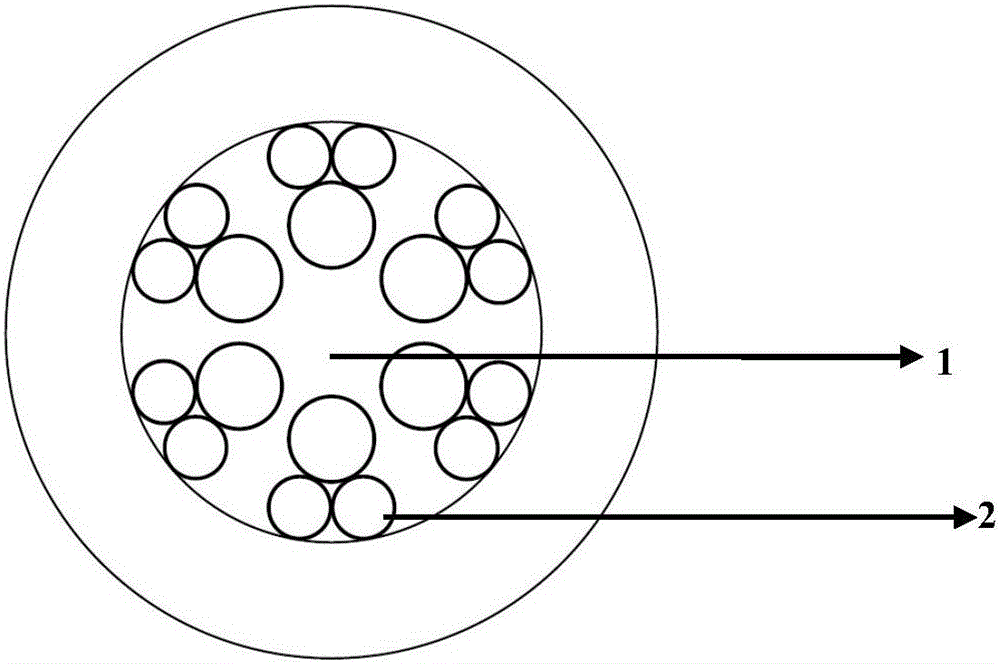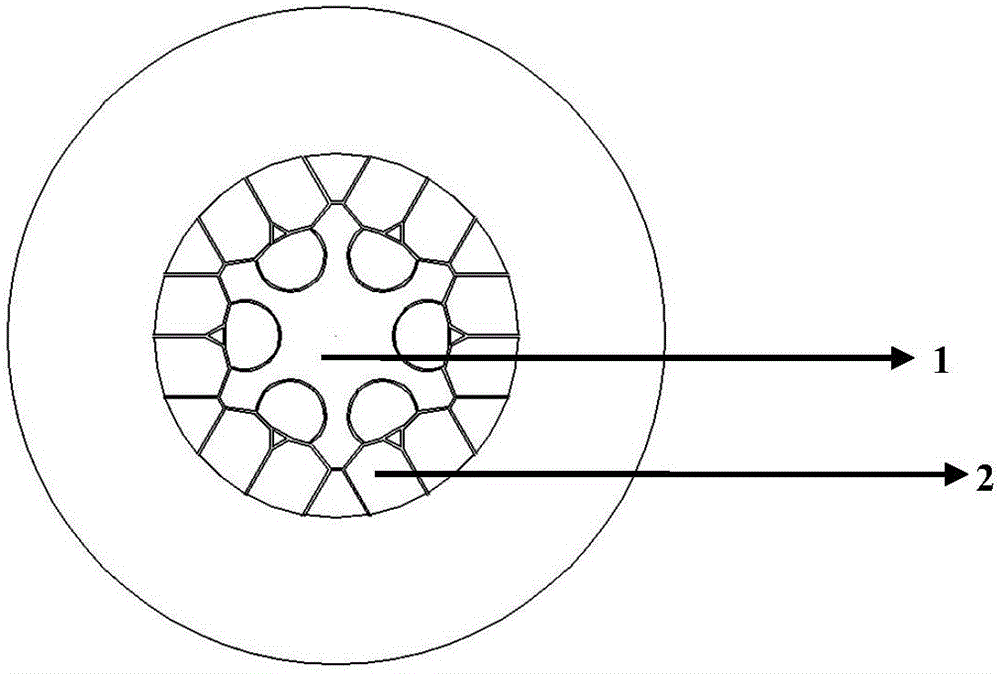Hollow anti-resonance optical fiber
An anti-resonance, optical fiber technology, applied in cladding fibers, light guides, optics, etc., can solve the problems of not having the complete bandgap characteristics of photonic crystal fibers, limiting application requirements, and narrow transmission bandwidth.
- Summary
- Abstract
- Description
- Claims
- Application Information
AI Technical Summary
Problems solved by technology
Method used
Image
Examples
Embodiment Construction
[0027] Specific embodiments of the present invention will be described in further detail below in conjunction with the accompanying drawings.
[0028] figure 1 , figure 2 with image 3 Schematic diagrams of end face structures of the first, second and third embodiments of the hollow-core anti-resonant optical fiber of the present invention are given. Their structures all include a core region (1) with a low refractive index and a cladding region with a high refractive index, and the cladding region with a high refractive index is jointly composed of an inner cladding region (2) and an outer cladding region. Among them, the low-refractive-index core area (1) is air; the inner cladding area (2) is formed by a plurality of microcapillaries, and the innermost (closest to the core) circle of microcapillaries is not in contact with each other and has no nodes. , has a negative curvature structure; the outer cladding region is formed by a solid material with a uniform distributio...
PUM
 Login to View More
Login to View More Abstract
Description
Claims
Application Information
 Login to View More
Login to View More - R&D
- Intellectual Property
- Life Sciences
- Materials
- Tech Scout
- Unparalleled Data Quality
- Higher Quality Content
- 60% Fewer Hallucinations
Browse by: Latest US Patents, China's latest patents, Technical Efficacy Thesaurus, Application Domain, Technology Topic, Popular Technical Reports.
© 2025 PatSnap. All rights reserved.Legal|Privacy policy|Modern Slavery Act Transparency Statement|Sitemap|About US| Contact US: help@patsnap.com



